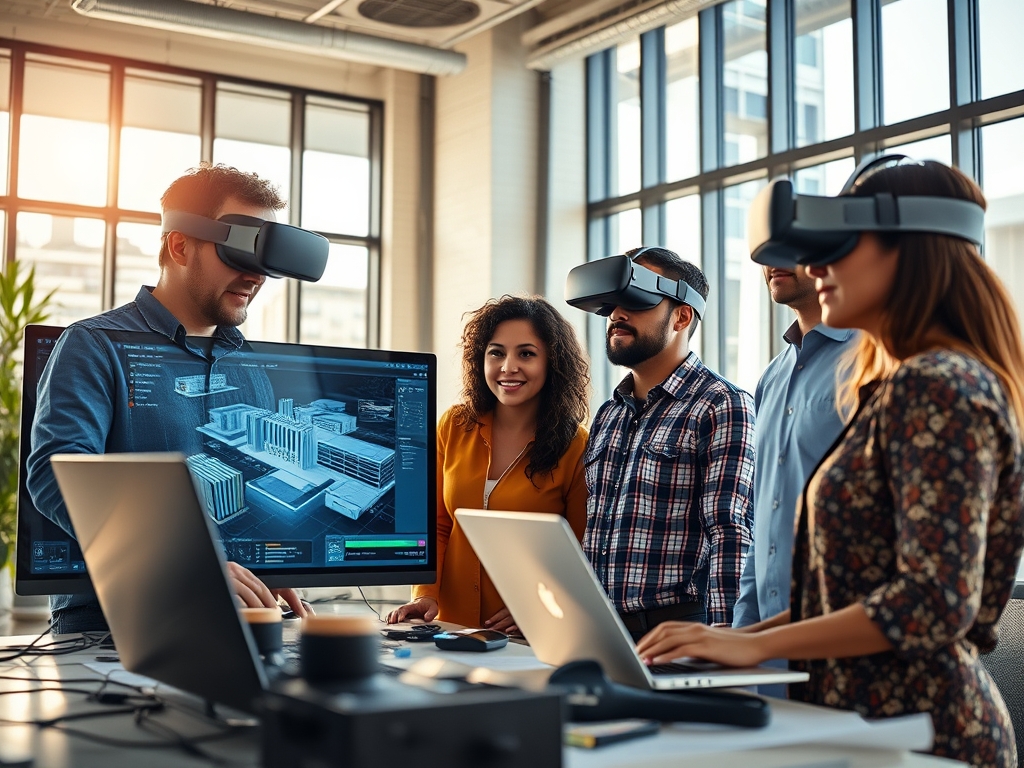Enhancing Productivity and Creativity: Remote Collaboration Strategies for AEC Professionals

The Architecture, Engineering, and Construction (AEC) industry is undergoing a significant transformation in work practices. With advancements in technology and changing global circumstances, professionals in this field now have the opportunity to work and collaborate from diverse locations. This article explores effective strategies for AEC professionals to maintain productivity and foster creativity in remote work environments.
The Evolving Landscape of AEC Work
The shift towards remote work in the AEC industry presents both challenges and opportunities:
Challenges:
- Coordinating projects across different time zones
- Ensuring clear communication in virtual environments
- Maintaining team cohesion without physical presence
- Adapting to new technologies and workflows
Opportunities:
- Access to a global talent pool
- Reduction in overhead costs
- Enhanced work-life balance for employees
- Increased flexibility in project management
Essential Tools for Remote Collaboration
To facilitate effective remote work, AEC professionals should consider implementing the following tools:
- Building Information Modeling (BIM) Platforms: Autodesk Revit and Graphisoft ArchiCAD enable real-time collaboration on 3D models.
- Project Management Software: Platforms such as Procore and PlanGrid streamline project coordination and document management.
- Virtual and Augmented Reality: These technologies facilitate immersive design reviews and virtual site visits.
- Cloud-Based Storage Solutions: Services like Dropbox and Google Drive ensure universal access to current files.
- Communication Platforms: Video conferencing tools (e.g., Zoom, Microsoft Teams) and messaging apps (e.g., Slack) maintain team connectivity.
- Digital Collaboration Tools: Platforms like Miro and MURAL support visual collaboration and brainstorming sessions.
Strategies for Maintaining Productivity
- Establish Clear Workflows: Define processes for file sharing, version control, and project updates.
- Implement Regular Check-ins: Schedule consistent team meetings to ensure alignment and progress.
- Utilize Asynchronous Communication: Leverage tools that allow team members to contribute according to their schedules.
- Adopt Time Management Techniques: Encourage methods like the Pomodoro Technique to enhance focus and productivity.
- Create Virtual Availability: Designate specific times for team members to be available for impromptu collaborations.
Fostering Creativity in Remote Environments
- Conduct Virtual Design Charrettes: Organize online brainstorming sessions using digital collaboration tools.
- Encourage Interdisciplinary Interaction: Facilitate virtual meetings between team members from different specialties to spark innovation.
- Develop Digital Inspiration Boards: Utilize platforms like Pinterest or Behance to share and discuss design concepts.
- Implement Focus Days: Designate certain days for uninterrupted work to allow for deep thinking and creativity.
- Leverage Technology for Site Analysis: Utilize 360-degree cameras and drones for comprehensive remote site surveys.
Maintaining Team Cohesion and Company Culture
- Organize Virtual Team Building Activities: Implement online events or challenges to foster team bonding.
- Recognize Achievements: Utilize digital platforms to acknowledge team members’ contributions and milestones.
- Create Informal Communication Channels: Establish chat channels for non-work discussions to simulate casual office interactions.
- Implement Mentorship Programs: Connect junior and senior staff members for virtual mentoring sessions.
- Conduct Regular Company-Wide Updates: Host virtual town halls to keep all employees informed and aligned with the company’s vision.
Case Studies in Successful Remote Collaboration
- Foster + Partners’ Global Design Approach: This renowned architecture firm has successfully implemented a global collaborative model, with teams working across multiple time zones.
- Arup’s Digital Twin Implementation: The engineering firm utilized digital twin technology to facilitate remote collaboration on the Queensferry Crossing project in Scotland.
- Skanska’s Remote Construction Management: This construction company has implemented remote monitoring and management systems on several projects, optimizing on-site presence while maintaining project oversight.
The Future of AEC Work
As the industry continues to evolve, several trends are likely to emerge:
- Increased integration of AI and machine learning for routine task automation
- Greater emphasis on sustainable and resilient design practices
- Normalization of flexible and hybrid work models
- Enhanced utilization of robotics and autonomous systems in construction
Conclusion
The ability to work and collaborate remotely is becoming increasingly crucial for AEC professionals. By embracing new technologies, refining workflows, and cultivating a culture of virtual collaboration, firms can maintain productivity and creativity while unlocking new potentials for innovation and efficiency.
The most successful AEC professionals and firms will be those who can seamlessly integrate physical and digital aspects of their work, leveraging the advantages of both to create inspiring, sustainable, and efficient built environments. The future of work in AEC is not just about location, but about how professionals collaborate to shape the world around us.